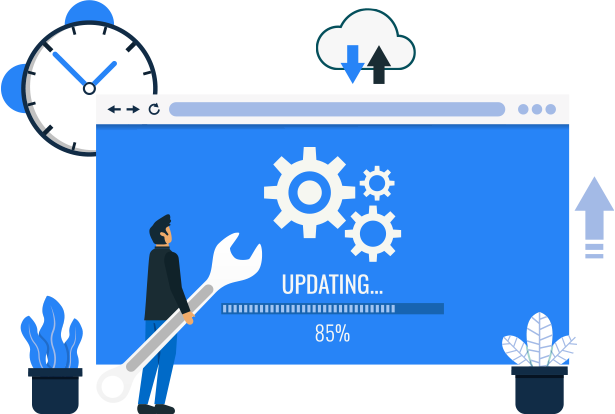
Key Features of Support and maintenance
Efficiency: Fast resolution of technical issues reduces downtime.
Reliability: Continuous system monitoring ensures stability.
Security: Regular updates and backups protect your data.
Scalability: Support grows with your business needs.
Collaboration: Teams work together using the same stable systems.
Proactive Maintenance: Prevents problems before they affect operations.
Support and maintenance Applications in action
Helpdesk Assistance: Technicians resolving tickets and guiding users.
System Monitoring: Servers, networks, and applications being actively monitored.
Issue Resolution: Errors and bugs being identified and fixed.
Backups & Recovery: Data being backed up and restored seamlessly.
User Training: Staff being trained and assisted with tools and software.
Our Support & Maintenance service keeps your systems, applications, and infrastructure running smoothly, securely, and efficiently, so you can focus on growing your business without interruptions.
types of Support and Maintenance
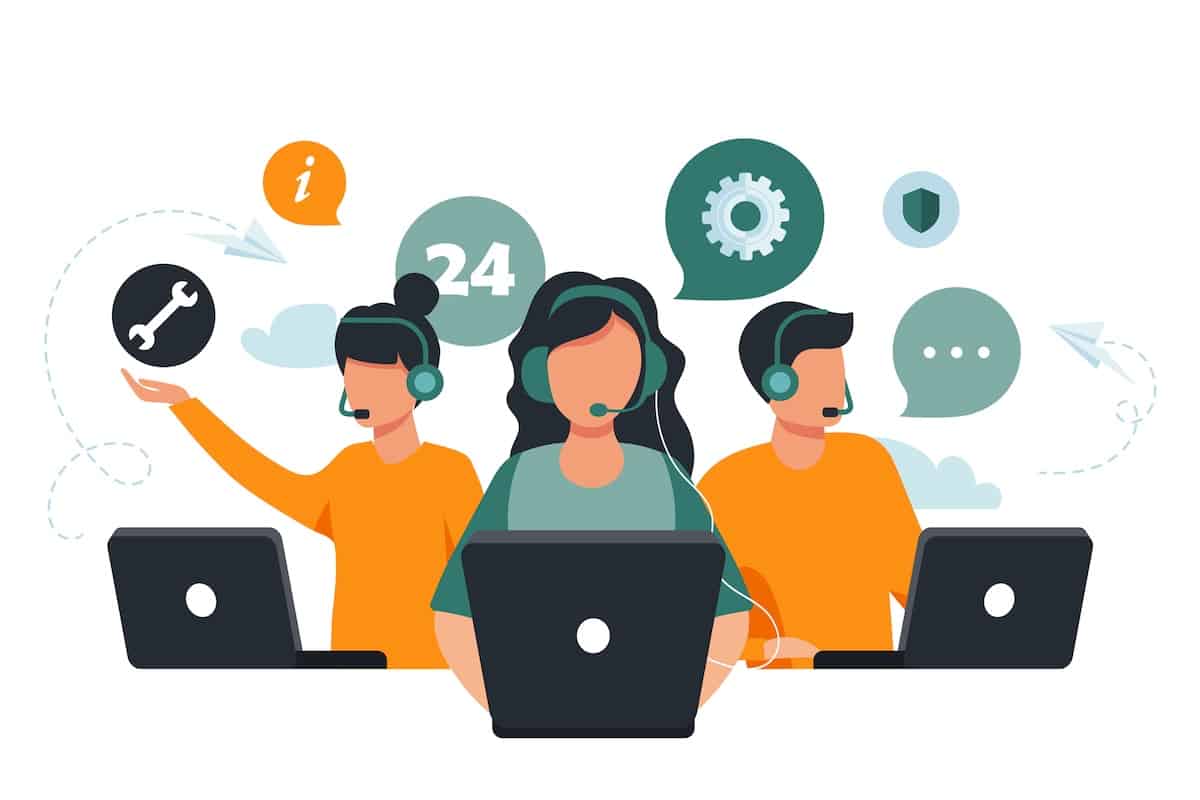
Technical Helpdesk & Issue Resolution is basically a service category in IT support that focuses on helping users when they encounter problems and making sure issues are resolved efficiently.
1. Ticket Logging & Tracking
Features & Functionality:
-
Submit tickets via portal, email, or phone.
-
Unique ticket ID for easy tracking.
-
Monitor progress from submission to resolution.
Purpose:
Keeps issues organized, prevents lost requests, and ensures transparency.
2. Categorization & Prioritization
Features & Functionality:
-
Classify tickets by type (software, hardware, network, etc.).
-
Assign priority levels (critical, high, medium, low).
-
Automatic routing to the appropriate support team.
Purpose:
Ensures urgent issues are handled first and specialized teams handle relevant requests.
3. Assignment & Escalation
Features & Functionality:
-
Assign tickets to specific technicians or departments based on expertise.
-
Automated escalation if tickets are not resolved within SLA.
-
Track technician performance and workload.
Purpose:
Guarantees accountability, faster resolution, and prevents bottlenecks.
4. Communication & Updates
Features & Functionality:
-
Users receive automatic notifications about ticket status changes.
-
Technicians can add comments, attach files, or request additional information.
-
Support staff can communicate solutions or next steps clearly.
Purpose:
Keeps users informed and improves collaboration between clients and support staff.
5. Resolution & Closure
Features & Functionality:
-
Verify problem resolution with the user before closing.
-
Document solution for knowledge base reference.
-
Collect feedback to improve service quality.
Purpose:
Ensures problems are fully solved, prevents re occurrence, and improves overall support efficiency.
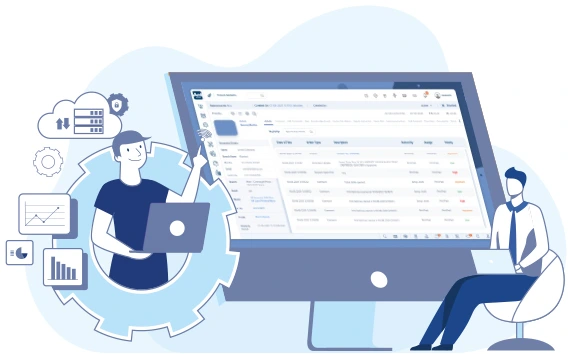
Preventive Maintenance means regularly checking, updating, and tuning your systems before something breaks — rather than waiting for problems to happen and reacting after the damage. It’s the “doctor’s check-up” of the IT world.
1. Scheduled System Checks
Features & Functionality:
-
Regular inspection of software, servers, and networks.
-
Pre-planned maintenance windows to minimize disruption.
-
Log results for future reference.
Purpose:
Prevents unexpected failures and keeps systems running efficiently.
2. Performance Monitoring
Features & Functionality:
-
Track resource usage, speed, and system errors.
-
Detect potential bottlenecks or failures early.
Purpose:
Allows proactive intervention before issues affect operations.
3. Backup & Recovery Verification
Features & Functionality:
-
Ensure backups are current and functional.
-
Test recovery processes regularly.
Purpose:
Reduces risk of data loss and ensures business continuity.

Remote Monitoring & Support: A continuous, behind-the-scenes service that tracks the performance, health, and security of your systems, networks, and applications. It allows technicians to detect, diagnose, and fix problems remotely in real time.
1. Real-Time Monitoring
Features & Functionality:
-
Monitor servers, applications, and network performance continuously.
-
Automated alerts for failures, downtime, or slowdowns.
Purpose:
Ensures quick detection and response to system issues.
2. Remote Troubleshooting
Features & Functionality:
-
Diagnose and fix issues without on-site visits.
-
Minimize disruption by solving problems in real time.
Purpose:
Reduces downtime and accelerates problem resolution.
3. System Health Reports
Features & Functionality:
-
Track uptime, error rates, and resource usage.
-
Generate reports for management review.
Purpose:
Provides insights to optimize system performance and maintenance planning.

Knowledge Base & Self-Service is the part of support that helps users solve common issues on their own instead of waiting for a technician. It’s like giving everyone a quick-reference brain full of solutions, guides, and tips.
1 . Centralized Information Repository
Features & Functionality:
-
Guides, FAQs, and tutorials for employees and clients.
-
Searchable database for quick problem-solving.
Purpose:
Empowers users to resolve minor issues independently, reducing support requests.
2. Continuous Updates
Features & Functionality:
-
Add new solutions as issues arise.
-
Maintain accuracy with software and process changes.
Purpose:
Keeps knowledge relevant and reduces repeated tickets.
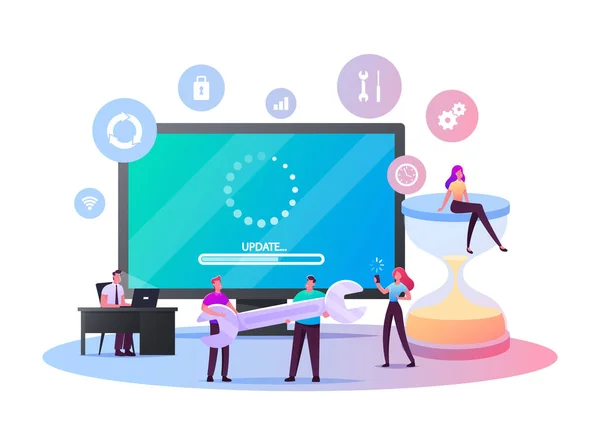
Updates, Upgrades & Security Management: Continuous improvement of your system through regular updates, version upgrades, and proactive security measures. This ensures your platform stays stable, compatible, and protected from new vulnerabilities while benefiting from performance improvements and new features.
1. Software Updates & Patches
Features & Functionality:
-
Apply updates to applications, systems, and security tools.
-
Minimize downtime with scheduled updates.
Purpose:
Ensures security, system stability, and compliance.
2. Version Upgrades
Features & Functionality:
-
Upgrade to latest software versions safely.
-
Maintain compatibility with integrated systems.
Purpose:
Keeps systems current, functional, and scalable.
3. Security Management
Features & Functionality:
-
Monitor vulnerabilities and apply fixes.
-
Maintain access control and audit logs.
Purpose:
Protects data, systems, and business operations from threats.
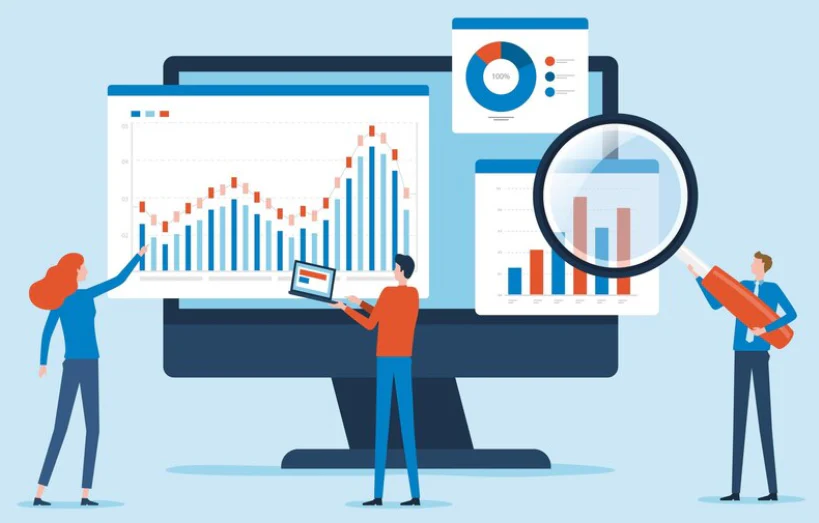
This aspect of Support and Maintenance ensures that every system and service is transparent, measurable, and continuously improving. It focuses on collecting, analyzing, and presenting key data about system performance, issue trends, and service efficiency — helping organizations make smarter, data-driven decisions.
1. Support Analytics
Features & Functionality:
-
Track ticket resolution times, types, and frequency.
-
Identify recurring issues or bottlenecks.
Purpose:
Optimizes support efficiency and resource allocation.
2. System Performance Reports
Features & Functionality:
-
Monitor uptime, downtime, and resource usage.
-
Highlight areas needing improvement.
Purpose:
Supports informed management decisions and proactive system maintenance.
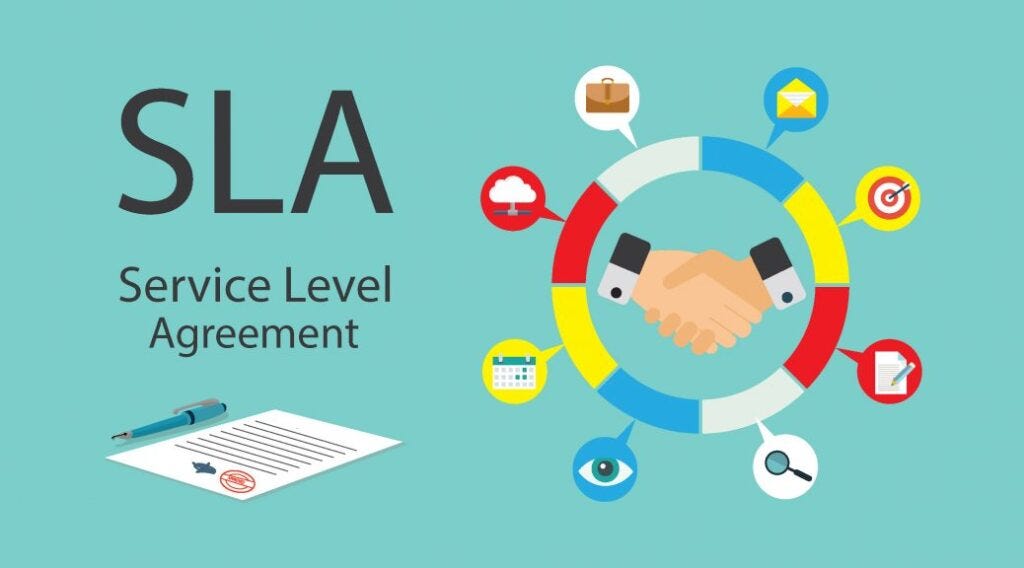
This component of Support and Maintenance ensures that all services are delivered within clearly defined standards — maintaining quality, reliability, and accountability. It’s about making sure every technical action, response, and resolution aligns with agreed Service Level Agreements (SLAs) and industry compliance requirements.
1. Define & Track SLAs
Features & Functionality:
-
Set service level agreements for response and resolution times.
-
Monitor SLA compliance for each support ticket.
Purpose:
Ensures reliable, timely service for all users.
2. Automated Escalations
Features & Functionality:
-
Escalate tickets automatically if SLAs are breached.
-
Notify managers for immediate attention.
Purpose:
Maintains accountability and ensures high-quality support.
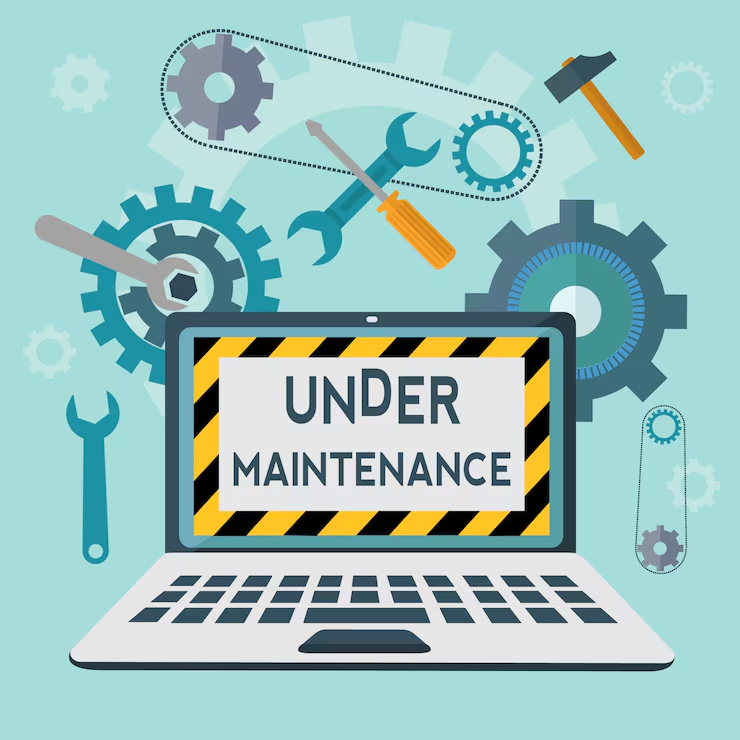
This part of Support and Maintenance focuses on ensuring that your existing IT systems, applications, and infrastructure continue to run smoothly — without disruption or performance decline. It’s about stability, optimization, and continuous improvement of what’s already in place.
1. System Monitoring & Optimization
Features & Functionality:
-
Check system performance daily.
-
Adjust configurations to improve efficiency.
Purpose:
Keeps business operations smooth and maximizes existing technology investments.
2. Integration Checks
Features & Functionality:
-
Ensure ERP, CRM, web apps, and other systems communicate correctly.
-
Identify and resolve minor integration issues.
Purpose:
Prevents operational hiccups and maintains workflow consistency.
3. Backup & Documentation
Features & Functionality:
-
Maintain regular backups for safety.
-
Document configurations and changes for future reference.
Purpose:
Protects data, ensures recovery readiness, and provides system transparency.